Have you ever wondered about the rich tapestry of traditional Filipino attire? From the ornate and vibrant Barong Tagalog to the intricate designs of indigenous Philippine clothing, the costume in the Philippines is a testament to the country’s cultural diversity and heritage. But did you know that these traditional garments go beyond mere fashion statements? They are a reflection of history, identity, and the enduring pride of the Filipino people. So, let’s delve into the world of Filipino costume culture and discover the fascinating stories behind these ethnic outfits.
Key Takeaways:
- The traditional clothing in the Philippines reflects the country’s rich cultural heritage.
- Filipino national costumes range from tribal outfits to more modern Filipiniana dresses.
- The Barong Tagalog and Baro’t Saya are iconic Filipino attires for men and women, respectively.
- Traditional Filipino dress is influenced by various cultures like the US, Spain, and Japan.
- These garments showcase the artistry, craftsmanship, and cultural pride of the Filipino people.
The Barong Tagalog and Baro’t Saya: Iconic Filipino Attire
In the vibrant world of traditional Filipino attire, two garments stand out as iconic symbols of cultural pride and elegance: the Barong Tagalog and Baro’t Saya. These traditional outfits have deep roots in Filipino fashion history and continue to be cherished as essential pieces of cultural attire in the Philippines.
The Barong Tagalog is a traditional Filipino men’s attire that holds a special place in the hearts of Filipinos. This beautifully crafted garment showcases intricate embroidery and delicate designs on lightweight fabric, creating a distinctive look that is both sophisticated and comfortable to wear. The Barong Tagalog is often worn for formal occasions, such as weddings and important gatherings, and is considered the national dress of the Philippines. It represents the Filipino spirit of resilience, elegance, and unity.
The Baro’t Saya is the counterpart to the Barong Tagalog, as the traditional women’s attire in the Philippines. Composed of a blouse (baro) and a skirt (saya), the Baro’t Saya is a delightful fusion of traditional aesthetics and modern fashion sensibilities. It showcases a myriad of designs, colors, and fabrics, ranging from intricate patterns to bold and vibrant hues. The Baro’t Saya captures the creativity and artistry of Filipino fashion, celebrating the diversity and beauty of the Filipino culture.
These iconic Filipino garments truly embody the essence of cultural attire in the Philippines. They serve as reminders of the rich heritage and historical significance that have shaped the Filipino fashion landscape. The Barong Tagalog and Baro’t Saya continue to be worn, cherished, and celebrated by Filipinos as symbols of their identity and deep-rooted cultural traditions.
| Barong Tagalog | Baro’t Saya |
|---|---|
| Traditional Filipino men’s attire | Traditional Filipino women’s attire |
| Characterized by intricate embroidery and lightweight fabric | Composed of a blouse (baro) and a skirt (saya) |
| Worn for formal occasions and considered the national dress of the Philippines | Comes in various designs, colors, and fabrics, showcasing the creativity and artistry of Filipino fashion |
The Influence of Other Cultures on Filipino Costume
Throughout history, the Philippines has been influenced by various cultures, and this is evident in their traditional attire. The occupation of other countries like the US, Spain, and Japan has shaped the Filipino costume culture, resulting in a unique blend of styles and features. Traditional Filipino dresses have distinct characteristics that set them apart from other cultural attires.
When it comes to traditional Filipino attire, the Philippines fashion history reflects a fusion of indigenous elements with influences from colonial powers and neighboring countries. The historical interactions and exchanges with other cultures have contributed to the vibrant and diverse clothing traditions in the Philippines.
For example, during the Spanish colonial period, the Filipinos adopted elements of Spanish fashion, resulting in garments like the Baro’t Saya for women and the Barong Tagalog for men. The Spanish influence is seen in the use of lace, embroidery, and intricate details in traditional Filipino costumes.
The American colonization brought about changes in the Filipino costume culture as well. Western-style clothing became more prevalent, particularly among urban dwellers. However, traditional elements were still incorporated, resulting in unique adaptations of American and Filipino styles.
The Japanese occupation during World War II also had an impact on Filipino fashion. The Japanese kimono and other traditional garments influenced the design of Filipino dresses, creating a fusion of Japanese and Filipino aesthetics.
It is through these interactions with other cultures that traditional Filipino attire has evolved, incorporating diverse styles, techniques, and materials. The result is a rich tapestry of clothing traditions that reflect the cultural heritage and identity of the Filipino people.
“The occupation of other countries like the US, Spain, and Japan has shaped the Filipino costume culture, resulting in a unique blend of styles and features.”
The influence of other cultures on Filipino costume can be seen in the materials used, the techniques employed, and the overall design of traditional Filipino dresses. Whether it’s the vibrant colors, the intricate embroidery, or the use of indigenous textiles, Filipino attire showcases the cultural diversity and historical connections of the Philippines.
Traditional Filipino Attire Comparison Table
| Attire | Origin | Distinct Features |
|---|---|---|
| Baro’t Saya | Spanish Colonial Period | Blouse (baro) and full skirt (saya), usually made from delicate fabrics like piña |
| Barong Tagalog | Spanish Colonial Period | Lightweight embroidered shirt, often worn with loose trousers called “saya” |
| Maria Clara | Spanish Colonial Period | Long, flowing dress with butterfly sleeves and intricate lace details |
| Terno | American Colonial Period | Kimona (blouse) and full skirt, often adorned with butterfly sleeves and intricate beadwork |
| Kimona and Patadyong | Visayas Region | Kimona (blouse) paired with a checkered patadyong wrap skirt |
| Malong | Mindanao Region | Versatile tube-like garment worn as a skirt, dress, or cloak |
Each traditional Filipino attire has its own unique history and cultural significance. These garments serve as a visual representation of the cultural diversity and rich heritage of the Filipino people.
Traditional Filipino Dresses: A Blend of Authenticity and Tribal Influences
Traditional Filipino dresses showcase an authentic and tribal aesthetic, with intricate designs, vibrant colors, and unique patterns. These garments often reflect the indigenous Philippine clothing, highlighting the cultural diversity and heritage of the different regions in the country. Filipino folk dress has a distinct and authentic charm that represents the rich history and traditions of the Filipino people.
Indigenous Philippine clothing has a strong influence on traditional Filipino attire. The tribal communities in the Philippines have their own distinct styles and techniques, which are reflected in the design and construction of these dresses. From handwoven fabrics to intricate beadwork and embroidery, these garments are a testament to the craftsmanship and artistry of the indigenous communities.
One example of traditional Filipino dress influenced by tribal cultures is the “Maria Clara” dress. It is a traditional formal attire for women, inspired by the colonial period and named after a character in a novel by José Rizal. The dress features a fitted bodice, butterfly sleeves, and a long flowing skirt, often made with delicate fabrics such as piña or jusi. The Maria Clara dress showcases the fusion of Spanish and tribal influences in Filipino fashion.
Traditional Filipino dresses are not just outfits; they are cultural symbols that tell stories of heritage and tradition. Each dress carries a piece of history and represents the identity of the Filipino people. It is through these garments that generations can connect and remember their roots.
These beautifully crafted garments are typically worn for special occasions and cultural celebrations. They are designed to capture the essence of Filipino culture and pay homage to the country’s rich traditions. The intricate details, vibrant colors, and unique patterns make traditional Filipino dresses truly captivating.
To get a better understanding of the diverse styles and designs of traditional Filipino dresses, let’s take a look at the following table:
| Traditional Filipino Dress | Region | Description |
|---|---|---|
| Baro’t Saya | Visayas and Luzon | The Baro’t Saya is a two-piece attire consisting of a blouse (baro) and a skirt (saya). It is often made with lightweight fabrics and features intricate embroidery and beadwork. |
| T’boli Dress | Mindanao | The T’boli dress is worn by the T’boli indigenous group in Mindanao. It is characterized by its vibrant colors, geometric patterns, and handwoven fabric. |
| Malong | Mindanao | The Malong is a versatile tube-like garment that can be worn as a dress, skirt, or even a turban. It is woven by ethnic groups in Mindanao and features intricate designs and vibrant colors. |
These are just a few examples of the traditional Filipino dresses that highlight the tribal influences and cultural diversity in the country. Each dress represents a different region and tells a unique story. They are a celebration of Filipino heritage and a testament to the creativity and artistry of Filipino fashion.
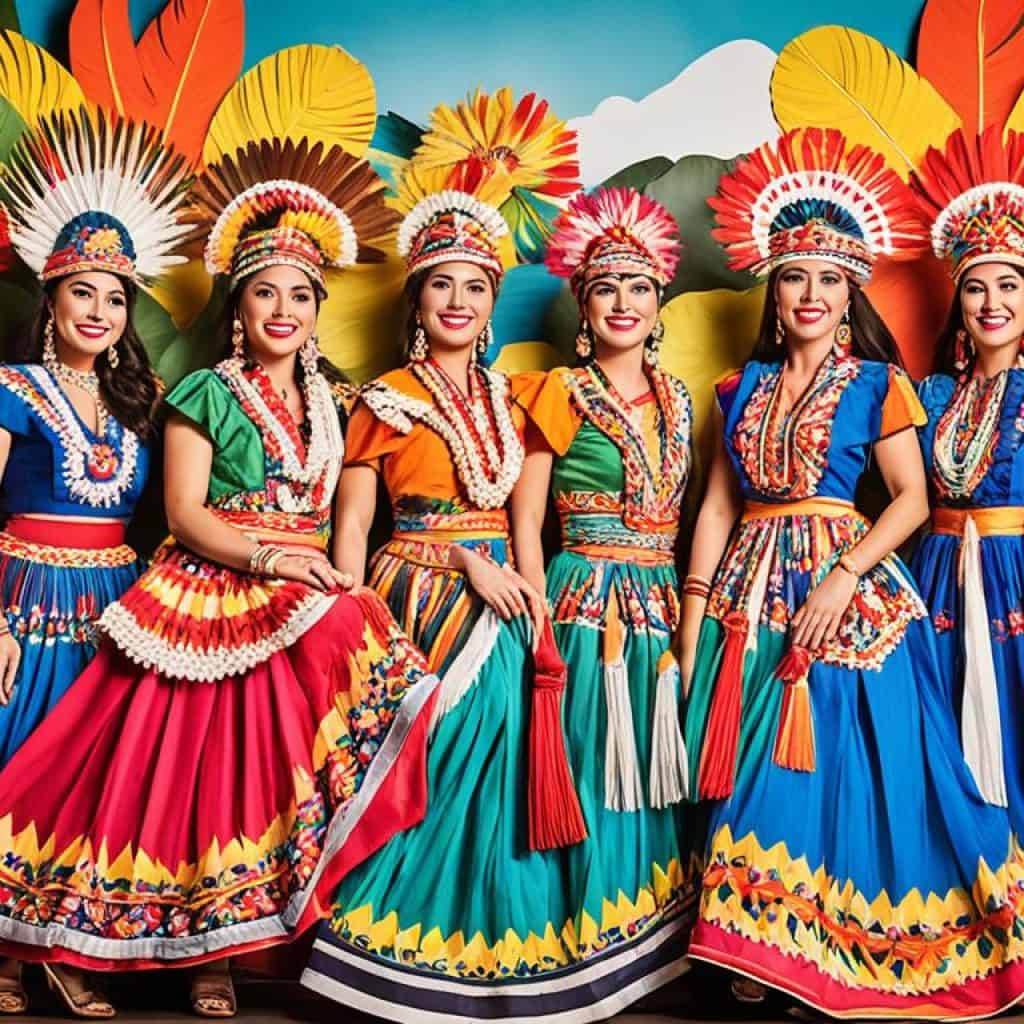
Modern Interpretations of Traditional Filipino Dress
In recent years, there has been a resurgence in the popularity of traditional Filipino dress, with modern interpretations being created. Designers have taken inspiration from the rich history of Filipino fashion and incorporated traditional elements into contemporary styles, resulting in modern Filipiniana dresses that are both stylish and fashionable. These modern interpretations pay homage to the traditional Filipino attire while catering to the evolving tastes and preferences of modern Filipino women.
Modern Filipiniana dresses embrace the beauty and elegance of traditional Filipino dress while infusing it with contemporary aesthetics. They feature unique design elements, innovative silhouettes, and a mix of traditional and modern fabrics. These dresses are perfect for various occasions, be it weddings, formal events, or cultural celebrations.
One of the key aspects of modern Filipiniana dresses is the fusion of traditional and modern elements. Designers experiment with different styles and techniques, incorporating traditional embroidery, intricate beadwork, and handwoven fabrics into modern silhouettes. The result is a harmonious blend of heritage and innovation, offering women a fresh and stylish way to proudly showcase their cultural roots.
Moreover, the popularity of modern Filipiniana dresses has extended beyond the Philippines, with Filipino designers gaining recognition internationally. Their creations have graced runways in major fashion capitals, showcasing the allure and sophistication of Filipino fashion to a global audience.
“The evolution of traditional Filipino dress into modern interpretations shows the adaptability and timelessness of our cultural attire. It allows us to preserve our heritage while embracing contemporary fashion trends.” – Emma Cruz, Fashion Historian
This trend not only highlights the enduring appeal of traditional Filipino attire but also contributes to the revitalization of Filipino fashion history. By giving a modern twist to traditional elements, designers are preserving and promoting the cultural significance of traditional Filipino dress.
| Traditional Elements | Modern Interpretations |
|---|---|
| Intricate embroidery and beadwork | Contemporary embellishments such as sequins and laser-cut designs |
| Handwoven fabrics like piña or jusi | Blend of traditional and modern textiles, such as chiffon or organza |
| Classic Filipiniana silhouette | Updated cuts and silhouettes, incorporating elements of Western fashion |
| Rich colors inspired by nature | Experimentation with bold and unconventional color combinations |
These modern interpretations of traditional Filipino dress not only provide a fresh perspective on Filipino fashion history but also empower modern Filipino women to embrace their cultural heritage with style and confidence. They serve as a reminder that traditional attire can be fashionable and relevant in today’s ever-changing fashion landscape.
With the increasing popularity of modern Filipiniana dresses, it is evident that traditional Filipino attire continues to inspire and captivate the fashion industry. The fusion of tradition and innovation in these garments reflects the dynamic and vibrant nature of Filipino fashion, bridging the gap between past and present.
Celebrating Cultural Attire in the Philippines
Enveloped in the vibrant and diverse Filipino culture are the traditional Philippine garments that reflect the unique identities and traditions of each region. These cultural attires, adorned with intricate details and vibrant colors, are more than just clothing—they are a celebration of Filipino heritage. From the elaborate costumes showcased during festivals to the everyday clothing of different communities, traditional Philippine garments hold immense cultural significance and play a vital role in preserving and celebrating Filipino fashion history.
The Philippines is a country rich in cultural diversity, with each region showcasing its own distinct ethnic outfits. The traditional garments vary in style, fabric, and design, showcasing the craftsmanship and artistry of Filipino fashion. From the intricately embroidered Barong Tagalog to the elegant and graceful Maria Clara dress, traditional Philippine garments exemplify the unique combination of indigenous influences and historical Filipino dress.
Throughout history, these cultural attires have played a significant role in the lives of Filipinos. Whether it’s the iconic Baro’t Saya worn by women or the traditional clothing of various indigenous communities, the garments reflect the rich tapestry of Filipino heritage.
The cultural attires in the Philippines are a testament to the creativity, artistry, and cultural pride of the Filipino people.
One of the most captivating aspects of cultural attire in the Philippines is its representation in festivals. Festivals such as the Ati-Atihan Festival and the Panagbenga Festival showcase the elaborate costumes worn by participants, reflecting the deep-rooted traditions and history of the region. These grand spectacles not only celebrate the unique cultural heritage of different communities but also serve as a platform for Filipinos to showcase their ethnic outfits and express their cultural identity.
Another remarkable aspect is that traditional garments are not confined to special occasions or festivals; they are also worn in everyday life by some individuals who want to embrace their cultural identity. From the vibrant fabrics and intricate patterns to the traditional accessories, Filipinos take pride in wearing their traditional garments as a way of preserving their cultural heritage and passing it on to future generations.
Traditional Philippine garments are a testament to the artistry and craftsmanship of the Filipino fashion industry. Every detail, from the choice of fabric to the intricate embroidery, showcases the dedication and talent of Filipino designers and artisans. These garments embody the pride and creativity of the Filipino people, maintaining the cultural identity while adapting to modern times.
The Significance of Filipino Traditional Dress in Festivals
Filipino traditional dress holds great significance in various festivals and cultural events in the Philippines. These events provide an opportunity for Filipinos to showcase their ethnic outfits and celebrate their cultural heritage. Festivals like the Sinulog Festival in Cebu feature participants dressed in colorful costumes, representing the rich traditions and history of the region.
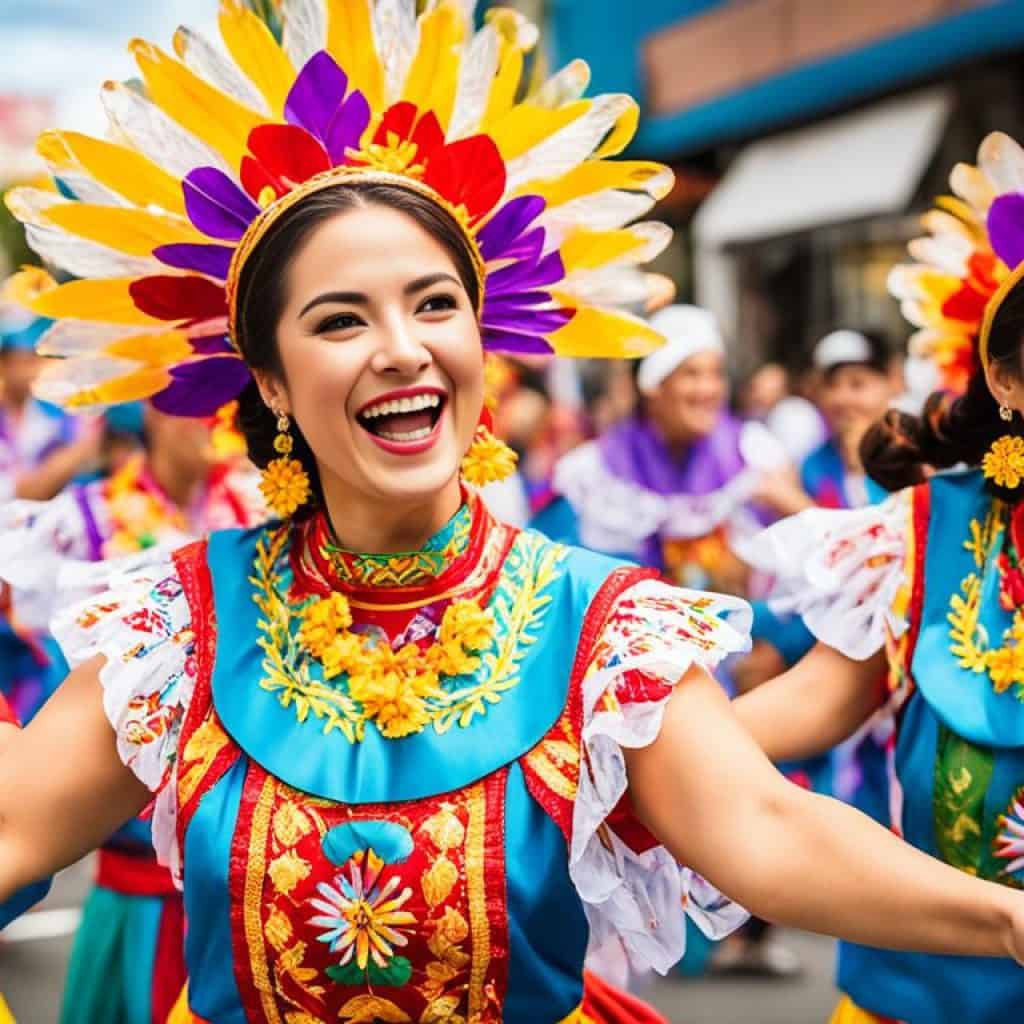
During festivals, ethnic outfits in the Philippines take center stage, displaying the vibrant colors, intricate designs, and traditional craftsmanship of Filipino fashion. Cultural attire in the Philippines is not only a form of self-expression but also a symbol of identity and cultural pride. Filipino traditional dress captures the essence of the nation’s diverse cultural heritage and plays a crucial role in preserving and showcasing its traditions.
Whether it’s the graceful and intricate Maria Clara dress or the colorful and lively T’boli attire, traditional Filipino dress represents the unique customs and practices of various indigenous communities across the country. These garments embody the spirit of celebration and unity, as Filipinos come together to honor their shared history and embrace their cultural roots.
The Role of Filipino Traditional Dress in Festivals
Filipino traditional dress plays multiple roles in festivals and cultural events:
- Preservation of cultural heritage: Festivals provide a platform for Filipinos to proudly display their traditional garments, ensuring the continued preservation and passing on of cultural knowledge to future generations.
- Expression of identity: Traditional dress allows individuals to showcase their regional and cultural identity, reinforcing a sense of belonging and pride.
- Unity and community building: Festivals bring people together, promoting a sense of camaraderie and bonding as participants don their traditional outfits in celebration of shared traditions.
- Artistic expression: The intricate embroidery, vibrant colors, and unique designs of ethnic outfits in the Philippines are a testament to the artistic talent and creativity of Filipino designers and craftsmen. Festivals serve as a stage to appreciate and admire these artistic expressions.
In festivals and cultural events, Filipino traditional dress is more than just apparel; it represents a cultural connection, a celebration of heritage, and a visual feast for the senses. These vibrant garments continue to captivate and inspire both the Filipino people and visitors from around the world.
The Influence of Traditional Dress in Philippine Media and Entertainment
Traditional Filipino dress plays a vital role in Philippine media and entertainment. It is not uncommon to see historical dramas, fantasy series, and films incorporating traditional garments as part of the characters’ attire. One iconic example is the Maria Clara dress, a traditional Philippine gown inspired by the Spanish colonial era. This attire is often featured in period dramas, showcasing the beauty and grace of historical Filipino dress.
The use of traditional Philippine garments in media and entertainment helps to bring stories to life and create an immersive experience for the audience. These costumes add authenticity, cultural depth, and visual appeal to the narratives, contributing to the overall aesthetic and storytelling. Whether it’s a character in a historical epic or a mythical creature in a fantasy series, the incorporation of traditional dress enhances the portrayal of Filipino culture and showcases the rich heritage of the country.
The influence of traditional dress extends beyond visual representation. It also plays a significant role in promoting Filipino fashion and culture. Media exposure brings attention to the intricate designs, vibrant colors, and cultural significance of traditional Philippine garments. This exposure can spark interest and curiosity among viewers and inspire them to learn more about Filipino costume culture and the traditional clothing of the Philippines.
“Traditional dress in Philippine media and entertainment serves as a powerful tool to promote and preserve Filipino cultural heritage. It enables us to take pride in our roots and share our unique identity with the world.”
– Maria Santos, Fashion Historian
By featuring traditional dress in various forms of media, the entertainment industry contributes to the preservation and promotion of Filipino fashion history. It also serves as a platform for talented designers and artisans to showcase their creativity and craftsmanship. The exposure gained through media and entertainment helps to introduce Filipino traditional dress to a wider audience, both locally and internationally.
Furthermore, the incorporation of traditional dress in Philippine media and entertainment goes beyond historical dramas and films. Contemporary television shows, advertisements, and music videos often feature modern interpretations of traditional Filipino attire. This fusion of traditional and modern styles not only celebrates the past but also reflects the evolving fashion trends and tastes of the present.
In conclusion, the influence of traditional dress in Philippine media and entertainment is profound. It not only enhances the visual storytelling experience but also promotes Filipino culture, encourages pride in heritage, and contributes to the preservation of Filipino fashion history. The presence of traditional Philippine garments in various forms of media is a testament to their enduring beauty, relevance, and cultural significance.
The Evolution of Filipino Fashion Through the Years
Filipino fashion has undergone significant changes over the years, influenced by both local and international trends. From the traditional dresses of the past to modern interpretations, Filipino fashion reflects the dynamic nature of the Filipino people and their ever-evolving tastes and preferences. Throughout history, the cultural attire in the Philippines has played a critical role in shaping and defining the fashion landscape of the country.
In the early years, traditional Filipino dress was heavily influenced by indigenous Philippine clothing, with each region showcasing its unique style and design. The clothing materials were sourced locally, such as abaca, piña, and jusi, resulting in garments that were not only visually stunning but also celebrated the rich natural resources of the country.
“Filipino fashion has continuously evolved, drawing inspiration from various sources to create distinctive looks that reflect our heritage while embracing global influences.” – Fashion expert, Maria Santos
As the Philippines opened up to foreign influences, particularly during the colonization period, the traditional dress began to transform. Spanish and American influences introduced new fabrics, designs, and silhouettes, leading to the creation of iconic garments like the Barong Tagalog and the Baro’t Saya.
The Barong Tagalog, a formal men’s attire, evolved from a simple collarless shirt to a more intricate garment adorned with delicate embroidery. On the other hand, the Baro’t Saya, the traditional women’s dress, became more elegant and fashionable, with various iterations incorporating lace, embroidery, and vibrant colors.
In recent years, Filipino fashion has embraced a fusion of traditional and modern elements, resulting in contemporary interpretations of traditional Filipino dress. Designers have sought inspiration from the country’s rich fashion history, infusing traditional motifs, fabrics, and techniques into modern designs, creating a unique and sophisticated style that represents both the past and the present.
The rise of Filipino designers in the global fashion scene has also contributed to the evolution of Filipino fashion. Recognized for their talent and creativity, Filipino designers have showcased their collections on international runways, bringing Filipino fashion to a broader audience and elevating its status on the global stage.
The Influence of Filipino Fashion Icons
Filipino fashion icons such as Inno Sotto, Pitoy Moreno, and Paul Cabral have played a significant role in pushing the boundaries of Filipino fashion. Their innovative designs, attention to detail, and commitment to preserving Filipino heritage have inspired younger generations of designers to create their unique fashion statements.
| Fashion Icon | Contributions to Filipino Fashion |
|---|---|
| Inno Sotto | Known for his modern take on traditional Filipino dress, combining classic elements with contemporary aesthetics. |
| Pitoy Moreno | A champion of Filipiniana fashion, reviving and popularizing traditional garments through his intricate designs. |
| Paul Cabral | An influential designer who has showcased Filipino craftsmanship and textiles on the international stage. |
The evolution of Filipino fashion continues to be fueled by a deep appreciation for cultural attire in the Philippines. The timeless beauty and historical significance of traditional Filipino dress serve as a constant source of inspiration for contemporary designers, ensuring that Filipino fashion remains rooted in its rich heritage while adapting to the changing times.
As Filipino fashion thrives and evolves, it continues to make a statement not only within the country but also in the international fashion community. The unique blend of traditional and modern elements, combined with the rich cultural heritage of the Philippines, makes Filipino fashion a truly remarkable and influential force in the global fashion industry.
The Relevance of Traditional Dress in Modern Times
Despite the changes in fashion trends, traditional dress in the Philippines remains relevant and cherished. Many Filipinos still embrace their cultural attire during special occasions, weddings, and cultural celebrations. The symbolic value of traditional garments connects Filipinos to their roots and serves as a reminder of their rich heritage.
Wearing traditional Philippine garments allows individuals to showcase their cultural identity and express pride in their heritage. It is a way of honoring the traditions and customs passed down through generations. The traditional attire holds a significant place in the hearts of Filipinos and serves as a powerful symbol of their cultural heritage.
“Traditional dress represents our connection to our ancestors and our cultural heritage. It is a way of celebrating our identity and sharing our story with others.”
One of the remarkable aspects of traditional Filipino fashion is its timeless appeal. Despite the ever-changing world of fashion, traditional garments continue to captivate people with their intricate designs, vibrant colors, and unique craftsmanship. They stand as a testament to the creativity, artistry, and attention to detail that define Filipino fashion history.
Preserving Traditions through Traditional Philippine Garments
Traditional Philippine garments play a crucial role in preserving and promoting cultural traditions. By wearing traditional dress, Filipinos keep their heritage alive and pass it on to future generations. It allows for the preservation of indigenous Philippine clothing and the rich history embedded within each garment.
Moreover, traditional dress creates a sense of belonging and unity among Filipinos. It serves as a visual representation of their shared cultural heritage, transcending regional boundaries and fostering a sense of national identity.
The Evolution of Filipino Fashion
Throughout history, Filipino fashion has evolved, combining traditional elements with contemporary styles. It reflects the changing tastes and preferences of the Filipino people while staying true to its cultural roots. The fusion of traditional and modern designs has resulted in a diverse and dynamic fashion landscape that celebrates the country’s rich heritage.
Modern interpretations of traditional Filipino dress have gained international recognition, with designers and fashion enthusiasts embracing the unique aesthetic and craftsmanship. The bold and vibrant styles are often showcased in international fashion shows, exhibitions, and cultural events, reaffirming the significance of traditional Philippine garments in the global fashion industry.
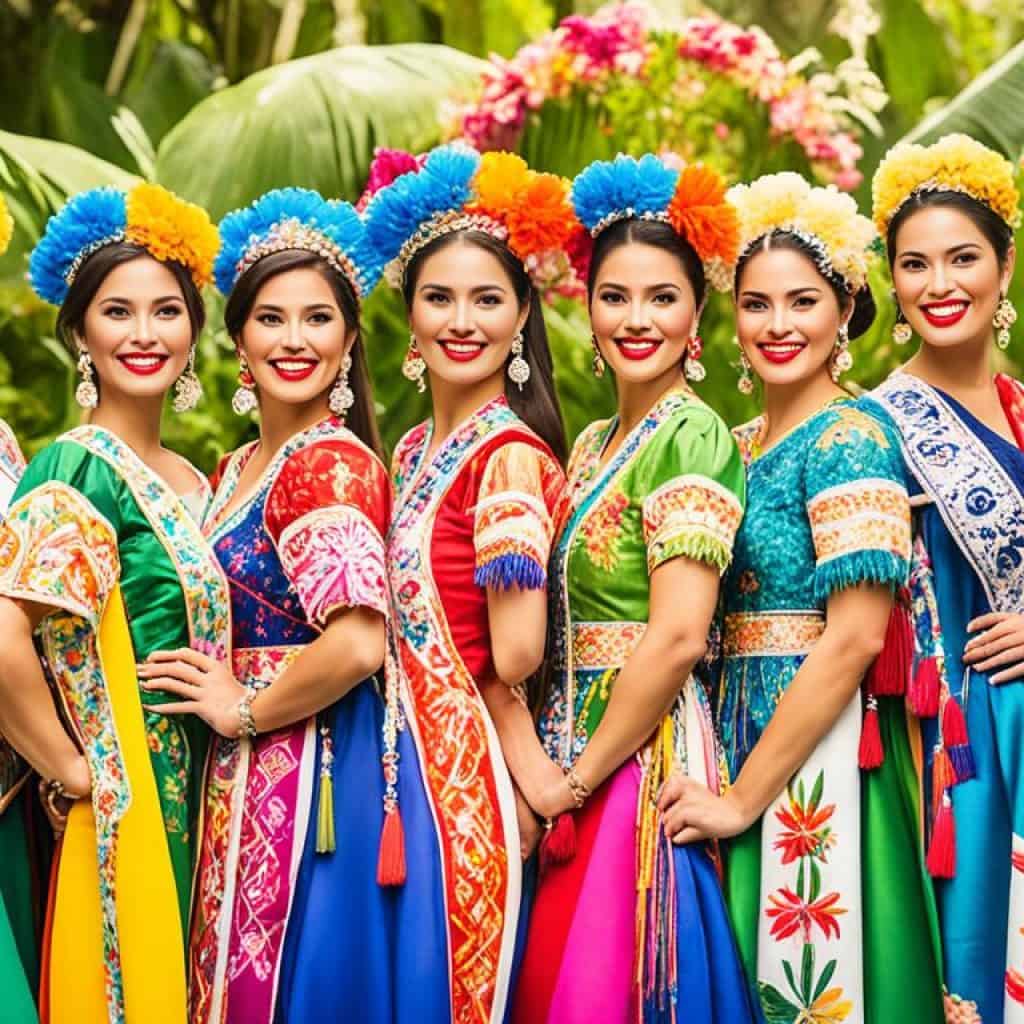
The Iconic Status of Filipino Traditional Dress
Filipino traditional dress holds an iconic status in the country, representing the beauty and elegance of Filipino fashion. With its intricate designs, vibrant colors, and cultural significance, Filipino attire continues to captivate and inspire people around the world.
Recognized internationally, Filipino traditional dress is often featured in fashion shows, exhibitions, and cultural events, showcasing the rich heritage and craftsmanship of the Filipino people. It is a testament to the creativity and artistry of Filipino fashion designers and artisans.
The cultural attire in the Philippines, with its unique styles and designs, has become synonymous with Filipino identity and pride. From the Barong Tagalog to the Baro’t Saya and other traditional garments, Filipino fashion history is intertwined with the development and evolution of Filipino traditional dress.
The iconic status of Filipino attire is not only evident in the fashion industry but also in the hearts and minds of Filipinos. Wearing traditional dress is a source of cultural connection and celebration, allowing individuals to express their heritage and preserve their traditions.
Whether it’s for special occasions or everyday wear, Filipino traditional dress continues to inspire and influence contemporary fashion trends. The combination of authenticity, tribal influences, and modern interpretations makes Filipino attire a symbol of cultural significance and artistic excellence.
“Filipino traditional dress is more than just clothing; it is a representation of our rich heritage and a source of pride and identity.” – Isabella Santos
The iconic status of Filipino traditional dress transcends borders, inviting people from different cultures to appreciate and celebrate the beauty of Filipino fashion. Its influence extends to the media, entertainment, and global fashion scenes, further establishing its significance and impact.
As Filipino fashion continues to evolve, Filipino traditional dress remains a timeless symbol of cultural beauty and heritage. With its vibrant colors, intricate designs, and artistic craftsmanship, it will continue to inspire generations to come.
The Cultural Significance of Traditional Dress in Everyday Life
In the Philippines, traditional dress is not just reserved for special occasions. It is also worn in everyday life by individuals who want to express their cultural identity and heritage. Embracing ethnic outfits allows Filipinos to honor their rich traditions and customs that shape their society.
Traditional dress holds deep cultural significance, serving as a powerful reminder of the country’s history and diverse cultural heritage. Whether it’s a vibrant Maria Clara dress, a colorful Baro’t Saya, or a unique ethnic ensemble from a specific region, these garments embody the Filipino spirit and symbolize pride in Filipino traditions.
Wearing ethnic outfits in daily life is a way for Filipinos to stay connected to their roots, preserving the cultural richness that defines their society. It is a visual representation of the country’s diverse cultural tapestry and an acknowledgement of the traditions that have shaped Filipino identity over the centuries.
By donning traditional dress, Filipinos not only celebrate their heritage but also educate others about their rich cultural diversity. These garments serve as a conversation starter, allowing wearers to share their stories, traditions, and values with those who may be unfamiliar with Filipino culture.
Moreover, wearing traditional dress fosters a sense of belonging and community among Filipinos. It creates a shared visual language, connecting individuals and forming bonds through a common appreciation for their cultural attire. Traditional dress becomes a unifying force that brings people together, encouraging a collective celebration of Filipino identity.
Traditional dress is more than just a fashion statement in the Philippines; it is a way of life that celebrates our heritage, preserves our history, and strengthens our cultural identity.
In everyday life, from the bustling streets of Manila to the remote provinces, it is not uncommon to see Filipinos proudly donning their traditional attire. Ethnic outfits are truly a part of Filipino culture, seamlessly woven into the fabric of everyday life.
Preserving Tradition, Embracing Identity
The cultural significance of traditional dress in everyday life extends beyond mere fashion. It is a powerful expression of Filipino identity, a testament to the enduring values, customs, and traditions that continue to shape the nation. Traditional dress is a vibrant thread that weaves together the tapestry of Filipino culture, ensuring its preservation for generations to come.
The Artistry and Craftsmanship Behind Filipino Traditional Clothing
Filipino traditional clothing is a testament to the artistry and craftsmanship of Filipino designers and artisans. Each garment is meticulously created, showcasing intricate embroidery, handwoven fabrics, and exquisite detailing. The level of skill and attention to detail put into crafting these traditional pieces is truly remarkable, reflecting the talent and creativity of the Filipino fashion industry.
<!–
Exquisite Embroidery
The art of embroidery is a cherished tradition in Filipino fashion. Skilled artisans painstakingly create stunning designs by hand, using delicate threads to adorn the garments with intricate patterns. The embroidery often features symbols and motifs that hold cultural and historical significance, adding depth and meaning to the traditional clothing.
–><!–
| Traditional Filipino Attire | Artistry and Craftsmanship |
|---|---|
| Barong Tagalog | Meticulously embroidered using intricate patterns |
| Baro’t Saya | Handwoven fabrics with exquisite detailing |
| Kimona and Patadyong | Colorful weaves and traditional techniques |
–><!–
Handwoven Fabrics
The use of handwoven fabrics is another hallmark of Filipino traditional clothing. Artisans skillfully create these fabrics using traditional techniques, preserving centuries-old weaving practices. The resulting textiles are rich in texture and color, adding depth and character to the garments. The use of handwoven fabrics also highlights the importance of sustainability and preserving cultural heritage.
–><!–
Meticulous Detailing
The meticulous detailing found in Filipino traditional clothing is a testament to the dedication and passion of the artisans. Every stitch, bead, and embellishment is carefully placed to enhance the beauty of the garment. From intricate beadwork to delicate lace trimmings, these details elevate the traditional attire, making it truly breathtaking and unique.
–><!–
“The artistry and craftsmanship behind Filipino traditional clothing is a testament to the rich cultural heritage of the Philippines. Each garment tells a story and reflects the creativity and passion of the designers and artisans involved in its creation.” – Filipino fashion expert
–><!–
Preserving Traditional Techniques
The artistry and craftsmanship of Filipino traditional clothing go beyond aesthetic appeal. The commitment to preserving traditional techniques ensures that these time-honored practices are passed down from one generation to the next. By continuing to utilize these techniques, Filipino designers and artisans contribute to the longevity and authenticity of traditional clothing in the Philippines.
–><!–
Diversity of Styles and Techniques
One of the remarkable aspects of Filipino traditional clothing is the diversity of styles and techniques employed. Each region in the Philippines has its own unique designs and weaving techniques, resulting in a rich tapestry of cultural attire. From the intricately embroidered Barong Tagalog to the vibrant weaves of the Kimona and Patadyong, Filipino traditional clothing celebrates the diversity and artistry of the country’s fashion heritage.
–>
Filipino traditional clothing captures the essence of Filipino fashion and serves as a testament to the country’s rich cultural heritage. The artistry and craftsmanship behind each garment are a source of pride for the Filipino people, and these traditional pieces continue to be cherished and celebrated. As Filipino fashion evolves, the preservation of traditional techniques ensures that these timeless creations will be appreciated for generations to come.
The Role of Traditional Dress in Cultural Preservation
Traditional dress in the Philippines plays a crucial role in cultural preservation. By wearing and showcasing traditional garments, Filipinos help preserve and promote their cultural heritage. The visibility and pride in traditional attire contribute to the preservation of indigenous Philippine clothing and the rich history it represents.
“Our traditional dress is more than just clothing; it is a representation of our cultural identity. By embracing and celebrating our traditional garments, we are keeping our customs and traditions alive for future generations.”
Indigenous Philippine clothing is not only a form of self-expression but also an embodiment of the historical Filipino dress. Each piece tells a story and carries within it the traditions of the Filipino people. From the intricate weaves of the northern provinces to the vibrant colors of the southern islands, traditional Philippine garments reflect the diversity and richness of the country’s cultural tapestry.
Wearing traditional dress is about more than just fashion; it is a way for Filipinos to connect with their roots and preserve their cultural heritage. It serves as a constant reminder of the values and traditions passed down from generation to generation. Through the wearing of traditional attire, Filipinos honor their ancestors and pay homage to the historical Filipino dress that has shaped their identity.
The Power of Cultural Preservation
Cultural preservation goes beyond the individual; it is a collective effort to safeguard the Philippines’ cultural legacy. By actively promoting and preserving indigenous Philippine clothing, communities ensure that their unique traditions and craftsmanship are not forgotten.
Traditional dress is often showcased in festivals, celebrations, and cultural events, providing a platform for Filipinos to showcase their heritage to the world. The appreciation and recognition of traditional Philippine garments help raise awareness about the importance of cultural preservation and inspire future generations to embrace their roots.
Preserving Cultural Heritage Through Traditional Dress
The preservation of traditional dress is deeply rooted in the fabric of Filipino society. Organizations and individuals dedicated to the promotion and conservation of indigenous Philippine clothing work tirelessly to document, protect, and revive traditional designs, techniques, and materials.
Through initiatives like workshops, exhibitions, and educational programs, the cultural significance of traditional dress is passed on to younger generations. By investing in the preservation of traditional Philippine garments, Filipinos ensure that their cultural heritage continues to thrive and evolve.
Embracing Tradition in a Modern World
In a rapidly changing world, the role of traditional dress becomes even more crucial. As societies become more globalized, traditional attire serves as a powerful symbol of identity, pride, and resistance to cultural homogeneity.
Embracing traditional dress in modern times is not about rejecting progress or modernity but rather about celebrating and integrating traditional values and aesthetics into contemporary life. It is a way to keep the rich heritage of historical Filipino dress alive while embracing the exciting possibilities of the future.
“Our traditional dress carries with it the soul of our ancestors. By wearing it, we honor their memory and keep our cultural heritage alive. It is a testament to our resilience, creativity, and the enduring beauty of our traditions.”
The role of traditional dress in cultural preservation is not just about clothing; it is about safeguarding a nation’s identity and ensuring that the legacy of indigenous Philippine clothing continues to shape the Filipino people.
The Continued Influence of Traditional Dress in Contemporary Fashion
Traditional Filipino attire has a lasting impact on contemporary fashion in the Philippines. Fashion designers recognize the beauty and cultural significance of traditional dress, leading them to incorporate elements of it into their collections. Through their creative vision, designers create fusion pieces that blend traditional and modern aesthetics, resulting in unique and captivating fashion styles.
These modern interpretations of traditional Filipino dress pay homage to the country’s fashion history while catering to the evolving tastes and preferences of the modern Filipino. By blending traditional elements with contemporary designs, fashion designers are able to create garments that are both fashionable and culturally significant.
Designers often draw inspiration from traditional Filipino garments such as the Barong Tagalog and the Baro’t Saya. The intricate embroidery, vibrant colors, and exquisite craftsmanship of these traditional garments are reimagined and integrated into modern fashion pieces, giving them a distinct Filipino flair.
The influence of traditional dress can be seen not only in formal attire but also in everyday fashion. Filipinos, especially the younger generation, proudly incorporate traditional elements into their casual outfits, reaffirming the relevance and importance of traditional Filipino dress in contemporary society.
“Traditional dress is not just about preserving our history and culture; it’s also about embracing our identity and expressing our heritage through fashion,” says renowned Filipino fashion designer, Rajo Laurel. “Incorporating traditional elements into contemporary fashion allows us to celebrate our rich heritage while staying true to our modern sensibilities.”
The Influence of Traditional Dress on Local and International Runways
The influence of traditional Filipino dress is not limited to the local fashion scene. It has also made its mark on the international runways. Designers from across the globe have been inspired by the vibrant colors, intricate details, and unique silhouettes of Filipino traditional attire.
“Filipino traditional dress is a breath of fresh air in the fashion industry. Its vibrant colors, intricate embroidery, and rich cultural heritage make it truly captivating,” says international fashion designer Stella McCartney. “Incorporating traditional elements into my collections allows me to create designs that celebrate diversity and promote cultural exchange.”
The continued influence of traditional dress in contemporary fashion serves as a testament to the enduring appeal and relevance of Filipino attire. It is a celebration of the country’s fashion history and a way to honor the craftsmanship and artistry of traditional Filipino garments.
| Traditional Dress Elements | Contemporary Fashion Interpretations |
|---|---|
| Intricate embroidery | Embellished details on modern dresses |
| Vibrant colors | Colorful patterns and prints |
| Unique silhouettes | Modern cuts and shapes inspired by traditional dress |
| Handwoven fabrics | Incorporation of traditional fabrics into contemporary designs |
Through these contemporary interpretations, traditional dress continues to inspire and captivate the fashion world, showcasing the rich heritage and cultural diversity of the Philippines.
Conclusion
The costume in the Philippines is a reflection of the country’s rich cultural heritage and serves as a vibrant testament to the creativity, artistry, and cultural pride of the Filipino people. From the iconic Barong Tagalog to the exquisite Baro’t Saya and other traditional garments, Filipino attire showcases the unique history and multicultural influences that have shaped the country’s costume culture. Each style and design represents a tapestry of stories, traditions, and customs passed down from generation to generation.
As Filipinos continue to embrace and celebrate their traditional attire, the costume in the Philippines remains an integral part of the country’s identity and a symbol of its rich heritage. The diverse range of styles, fabrics, colors, and patterns capture the essence of Filipino fashion history and signify the cultural diversity present in the Philippines. Whether worn during special occasions, festivals, or in everyday life, traditional Filipino attire holds deep significance and connects Filipinos to their roots.
Despite the ever-changing fashion landscape, the lasting appeal and relevance of the Filipino costume are undeniable. Contemporary designers draw inspiration from traditional dress, infusing modern interpretations with traditional elements to create fusion pieces that bridge the gap between the past and the present. This continued influence of traditional dress in contemporary fashion further highlights the enduring beauty, artistry, and cultural significance of the costume in the Philippines.
As we admire the intricate embroidery, vibrant colors, and exquisite craftsmanship of traditional Filipino attire, we celebrate the rich heritage and cultural diversity of the Philippines. The costume in the Philippines is not just a mere garment; it is a testament to the resilience, creativity, and pride of the Filipino people, ensuring that the country’s traditional attire remains a treasured part of its cultural legacy for generations to come.
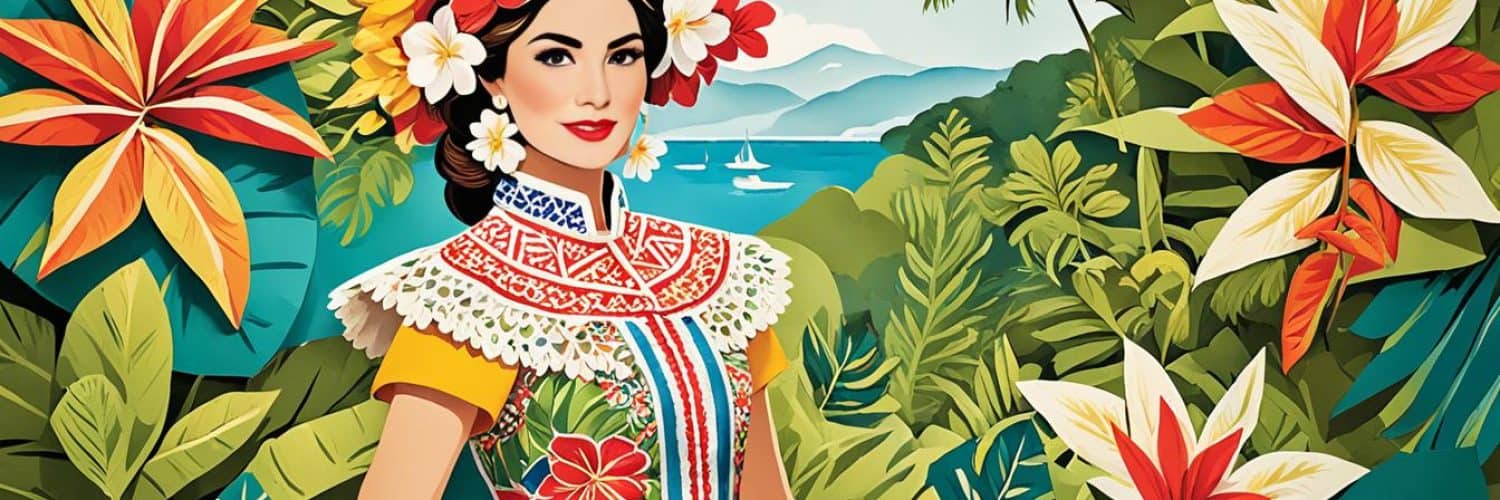
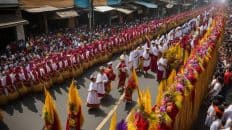












Add comment